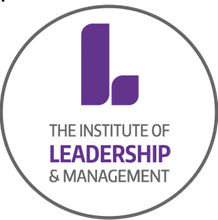One of the biggest problems we’ve seen in corporate productivity – both during the pandemic and in the recovery – is rising inequality in the allocation of work.
It’s clear that the middle has been completely hollowed out. There are people who have far too much work to accomplish – and yet everything has continued to migrate towards them. Their stress levels are enormous, and they’re either falling behind because it’s so hard to keep up with the task volumes, or they are just about keeping up – but at the expense of every other part of their lives.
On the other end of the scale, there are people with little-to-nothing to do – some of whom have lost their jobs – and they may justifiably wish to be re-engaged with the whole process of being productive. But all of the work has been pushed towards people who were already under significant strain.
Essentially, this is the Matthew effect in action.
But there’s something that leaders must be aware of. While the tendency to ‘reward’ smart and efficient staff with more work seems to make logical sense, that’s only true up to a point. After that, the model breaks down.
People are not machines. And as leaders, we have to get much better at sensing where the point before the break is for our staff.
Meanwhile, individual contributors have to get better at taking the risk of defining and articulating their limits – and defending them. Naturally, there are issues around saying no to work, so we have to be thoughtful in how we go about framing our limits. But if we are ruined by the effort of keeping up, after already being severely stretched, we are not serving anyone. Nobody is going to draw the boundaries for us – we have to do it for ourselves in a way that makes our contribution sustainable.
That said, there are ways and means for leaders to gauge how much work their staff can take on before they lose their efficacy. And the most important thing is for leaders to not be separated from their employees and stuck in a corner office, skulking, guessing and speculating.
Talk to your people. Ask them questions. Have conversations so you can understand what they’re doing, how much time they’re spending doing it, what sorts of snags and pain points they’re hitting along the way that are impeding progress… any data that will help you base your delegation decisions on a foundation of reality.
Another important component is to trust your people not to mislead you. Fundamentally, we’re a fifth of the way into the 21st century – you’re unlikely to invite some sort of old-school union slowdown, where people walk one inch every 30 seconds in a factory deliberately to make the production line grind to a halt.
If you have a good relationship with your staff – where they believe genuinely that you want to know the real answers to your questions, and that you’re making a good-faith effort to balance outputs with sustainability – then they will tell you the truth. They will give you the guidance you need so you can understand what are realistic versus unrealistic expectations.
What does all this mean for the hybrid era? Sadly, some cultures will remain dismissive of, and/or suspicious about, remote working. A lot of that suspicion lifted amid the emergency conditions of lockdown – but we often quickly forget even the biggest, most widespread lessons. So that’s going to be a moving target for some time yet.
But new norms will surely evolve over time – perhaps with many office staff doing two remote days a week. Those may end up being the deep-work days when employees can focus on producing in the absence of workplace distractions. Alternatively, other firms may take a remote-first approach, where they get together in person, say, only once a month.
We don’t know what it’s ultimately going to look like – but in the meantime, leaders need to be clear about what they are demanding from their people so there are no mismatches. It’s important to do a lot of deep thinking to ensure that remote staff are not going to be in any way dispossessed.
By the same token, if you are a remote employee, you are probably going to have to try somewhat harder to make an impact: frankly, there are just organic, relationship-building advantages to being in person that you will need to make a special effort to surmount.




